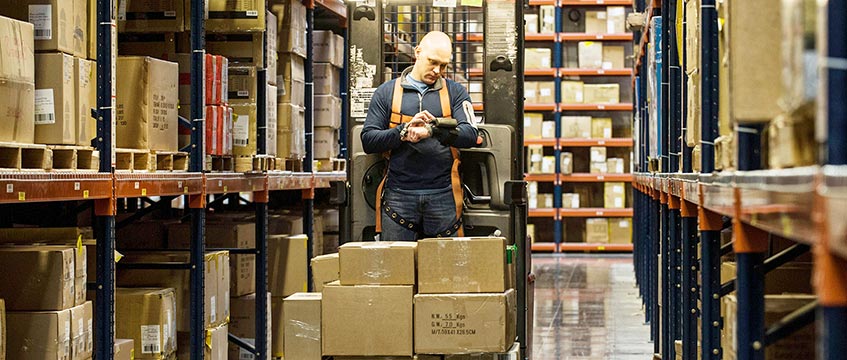It has been a tough year for retailers, with a spate of high-profile CVAs and the continuing adjustment of business models to adapt to modern consumer tastes and interests. Does that mean logistics assets are now the only retail property worth investing in? Two industry experts make their cases
FOR: James Dunlop, partner, Tritax
We have been investing in big box logistics assets since 2006, when we developed and funded Next’s 1.1m sq ft site at Brookfields Park, South Yorkshire. Even before the rise of e-commerce, these assets were significantly improving the financial and operational efficiency of retailers’ supply chains.
By 2013, when we launched Tritax Big Box, UK retail was beginning to feel the first significant impact of online retail. As a small, densely populated and affluent nation, the UK soon became one of the most advanced e-commerce markets in the world, with UK households spending more online than any other country.
Retailers soon recognised that these assets were not only critical in terms of optimising their supply chains and driving operational efficiency, but also essential in future-proofing their businesses against the growing competition from online rivals.
More recently the expansion of omni-channel retailing has confirmed that bricks-and-mortar retailing plays a role in meeting consumers’ desires to interact with retailers in different ways. To survive, retailers must now offer physical and online/mobile stores and app-driven sales. This new digitalised retail world, rising staff costs and business rates means that in order to survive retailers must reinvent and reduce their expensive high-street portfolios, establishing a format that is both profitable and fit for purpose for the modern consumer.

In our view the high street is not dead – however, it will continue to contract, with secondary and tertiary product on an accelerated trajectory of deterioration. Large and prime retail locations providing a destination retail experience alongside a leisure offer will continue to provide a viable function.
Meanwhile, modern, well-located big box logistics assets are now mission-critical for retailers. They offer flexible, relatively cheap accommodation from which they can orchestrate both online and retail outlet sales while maximising the efficiency of their stock management functions.
Digital retailing is here to stay, and the benefits of this relatively new sub-sector is now recognised and valued by retail occupiers globally. The strategic importance of big box logistics assets, alongside the significant inward investment in automation by occupiers, means tenants are willing to sign long leases. The same is true with continental Europe: it’s just four to five years behind and big boxes tend to be even bigger, servicing larger catchment areas.
This strength and depth of occupational demand, combined with constrained supply, has led to a continued shortage of big boxes available to let. Even in the longer term, the supply of big box assets is likely to remain thin, exacerbated by both land constraints in appropriate logistics locations and developers, understandably, unwillingly to speculatively develop units of more than 400,000 sq ft.
The sector will continue to deliver attractive rental growth. CBRE forecasts an average annual rental growth rate of 4.25% for each of the next four years.
The investment market remains robust, with global investors drawn by the attractions of modern assets, producing secure and growing rental incomes and the long-term structural change dynamics.
We believe specialist and informed investors will always be able to source attractive assets at prices that represent good value. Our model remains a relationship-driven one, where singular focus, reliability, trust and a track record of delivering on our commitments lie at the very heart of what we do.
AGAINST: Mark Bourgeois, managing director UK & Ireland, Hammerson
Consumers of news will be under no illusion that the UK retail market is tough. 2018 has already seen a raft of CVAs and the nation’s much-loved department stores are grappling with their business models.
In this demanding environment, both retailers and retail destinations need to be on top of their game. Bold decisions drive performance and make the attractiveness of investing in retail property stand out. So my central argument is that the right retail is definitely worth investing in, but it comes with a health warning: be willing to adapt.
Taking back the keys in 2016 from House of Fraser at Highcross in Leicester took mettle on our part. It occupied 117,000 sq ft over three floors in a prime position.
Our reconfiguration of the space is now nearly complete. A Zara store, the largest single-floor store outside London, opened last month. JD will shortly launch a new flagship, and our adventure golf offer and restaurants will open early next year.

Alongside a massive improvement in the customer offer, the project will deliver £1.5m of additional income. A step change in retailer line-up like this creates a superior quality of income growth and supported our decision to reduce portfolio department store exposure by 25%.
Such an insightful and energetic leasing approach is undoubtedly a draw to investors. The recent 50% disposal of Highcross attracted a major international investor. New to our jv line-up and the UK retail market, it represents a big vote of confidence in the face of current headwinds.
Investors are looking for quality of income that is underpinned by leasing demand, rental tone and occupancy rates – but polarisation is rife. Over the past three years, demand for space at flagship shopping centres has grown at twice the rate of other centres. At Hammerson, our leasing volumes are up by 23% on last year, with 80% of these signed above ERV.
Urban populations are growing and major cities are differentiated by the relative catchment wealth and density. Most of our reshaped portfolio is in the top 15 European cities. Greater urbanisation has the potential to further transform the built environment and our City Quarters concept will maximise and underpin this value.
Looking ahead, insights tell us that urban flagship centres will continue to outperform. These venues are important brand showrooms where shoppers meet, socialise and enjoy. The “big day out” is the fastest-growing shopping mission to UK centres, accounting for a quarter of visits and generating the highest average spend per visit.
Physical space provides an emotional connection and brings people together. A shed in a field, however well built, can never hope to achieve this. And with 78% of the European population expected to live in cities by 2030, I know where I would put my money.
As the winners and losers in retail shift, a more agile approach to tenant curation is required. Human beings are sociable and in an increasingly urban environment will always look for memorable experiences. This underlines why there remains intrinsic value in assets, such as ours, which bring people together.











